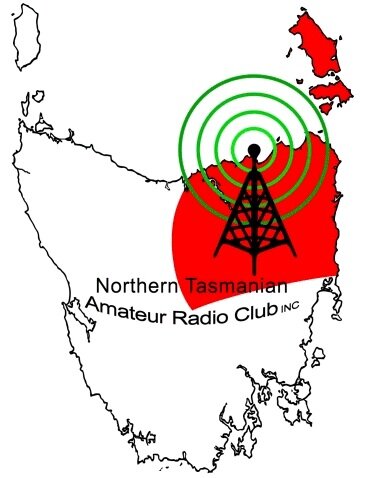Broadcast - 4 May 2025
For last week’s club room technical night, just to be different Ross VK7ALH didn’t bring in any radios from his collection or current jobs on his work bench. He turned up with an antenna, but surprisingly even that wasn’t meant for amateur bands! It was for the AM band, remember that band segment set aside for AM broadcasters, the one that covers 531 to 1602 KHz. Also remember this is written by a person from the North of the state where our beloved Australian Broadcasting Corporation stations have been moved onto the FM band, thus leaving the AM band destitute during daylight hours.
This antenna was manufacturer in Australia by “PK’s Loop Antennas” who describe it and I quote “An Outdoor AM Loop Antenna with remote tuning for use on buildings constructed with steel roofs and frames (like sheds or caravans) or those with reinforced concrete. The loop mounts outdoors and a single coax cable connects it to the tuning control box. There is an output for a wired connection to your AM Radio / Receiver. The tuning system is sharp and peaks right on station, boosting weak signals whilst rejecting interference and enhancing reception quality.”
A quick check confirmed the loop diameter was about 400mm and was made from 32mm Heavy Duty corrugated electrical conduit. The two ends of the sturdy loop terminated on either side of an IP56 rated electrical box, which also incorporated an aluminium mounting bracket. This was certainly designed to be weather proof. After Ross removed the cover plate on the mounting box the small printed circuit board was revealed, it carried a couple of electronic components and two IDC headers, the type you generally plug ribbon cables into. This was no exception and had a 17 conductor ribbon cable plugged in on one side that disappeared into the conduit loop, back out the other side and plugged into the other IDC connector.
On a closer inspection of the printed circuit board each the IDC connector pins was offset by one from its mate in the other connector. Effectively stringing each conductor loop onto the end of the preceding one as it looped around and around, electrically making one continuous wire of about 21 metres in length. A very sturdy little unit, thanks Ross.
For a more in-depth dive into these antennas follow the link provided in the text version of this broadcast. AM Radio Loop Antenna
Andre’ VK7ZAB had a very nifty and small power supply module measuring approximately 65 by 30 mm.
The fixed output is 5 Volts DC at current up to 5 Amps and is available from an input DC voltage range of 5 to 30 Volts. The output is available on both the USB connector and screw terminals. To make it even handier the input can be via 2.1 mm DC plug or screw terminals. The USB connector has proven to be very convenient when remotely powering a Raspberry Pi 5, Pi Zero or Heltec Meshtastic module as it alleviates the need to solder or use connectors on the header pins for power.
As always pictures will be available on the NTARC Web site under “Blogs” for this broadcast. NTARC Blogs
UPCOMING EVENTS
TestNet and TechNet session - Every Wednesday, TestNet/CW course on 3.580MHz from 7 pm, then a TechNet on 3.567MHz from 7.30 pm till 8.30 pm. Your host for the evening is Nic VK7WW.
Club Room Technical night session - The next session will be on Wednesday the 14th May, at the usual time of 6.30 pm at the Club Room Archer Street, Rocherlea.
Coffee Morning - held every Friday in the NTARC Club rooms. Time is from 10 am to noon and we look forward to seeing you all there. So why not pop in check the QSL cards and join us for a cuppa, there is endless tea and coffee along with biscuits available for a donation.
Finally - A reminder to all members that if you have any items of news you would like added to our weekly roundup, no matter how trivial, then please email them to the Secretary at the following address news@ntarc.net all items to be received no later than 5 pm on the Friday prior to the Broadcast.
That’s all folks,
73, Stefan VK7ZSB, Secretary NTARC Inc.




